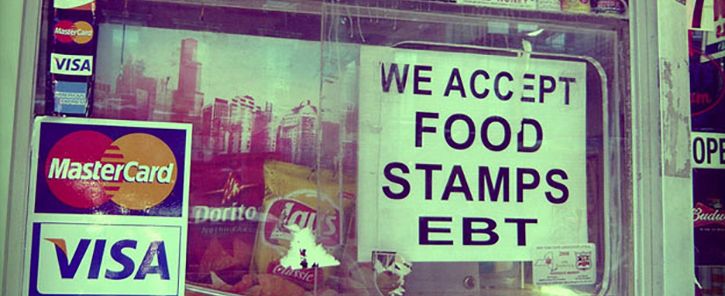

U.S. Spends $907 Million on Useless “Nutrition Education” for Food Stamp, WIC Recipients


Besides spending tens of billions of dollars on fraud-infested programs to feed the poor, the U.S. government wastes an additional $907 million to give recipients useless “nutrition education” courses with rates of effectiveness that cannot be assessed. It marks the latest scandal to rock the government’s famously bloated and corrupt food stamp program as well as a multi-billion-dollar sister project that feeds millions of low-income women and their children.
The U.S. Department of Agriculture (USDA) operates and funds both programs and spends a fortune on them annually. The grand master is food stamps, renamed Supplemental Nutrition Assistance Program (SNAP) by the Obama administration to eliminate the welfare stigma. Under Obama the food stamp tab reached a ghastly $80.4 billion in one year to provide a record 46 million people with the welfare benefit. The Trump administration has reduced it a bit, but not by much. The latest USDA figures reveal the food stamp budget is hovering north of $60 billion annually to feed around 44 million people. That’s still a chunk of change. Uncle Sam spends $5.3 billion a year on the other program, which is known as Women Infants and Children (WIC). It serves around 7 million recipients and claims to “safeguard the health of low-income women, infants, and children younger than 5 who are at nutritional risk.”
Besides doling out huge sums of taxpayer dollars to feed this large demographic, the USDA dedicates extra money to school the beneficiaries about nutritional matters. The classes and counseling are conducted in daycares, grocery stores, public housing, health clinics, food banks, recreation centers and other public facilities throughout the country. In fiscal year 2017 this cost $907 million, according to a federal audit that concludes the effectiveness of the so-called “SNAPEd” cannot be aggregated or reviewed. States, which are responsible for distributing food stamps, also provide information about the educational programs in a way that “hinders the USDA’s ability to assess the effectiveness” and “determine whether SNAPEd is achieving its goals,” according to the audit, which was conducted by the investigative arm of Congress, the Government Accountability Office (GAO). That’s diplomatic, sugar coating for it’s a waste. The congressional watchdog further reveals that it already reviewed the USDA’s dubious nutrition education efforts a decade and a half ago and found “challenges” across the agency.
The GAO report breaks down the expenses and offers some details about the actual courses. The USDA spent $422 million to educate WIC recipients about good nutrition and $404 million to school those who get food stamps. An additional $51 million went to an “expanded food and nutrition education program,” $16 million to “team nutrition” and $13 million to a “food insecurity nutrition incentive grant program.” Those wondering how it all works may find answers in this line from the GAO: “Sometimes multiple nutrition education programs operate in the same setting. For example, SNAP-Ed may provide classes for students while Team Nutrition may distribute teacher training materials and nutrition education curricula to the same school.” The bottom line is that most of the USDA’s nutrition education programs target interventions to low income populations, according to the audit.
Why does the USDA waste such large sums on this nonsense? Because another government agency, the Centers for Disease Control and Prevention (CDC), claims that the diet of many Americans lacks adequate sources of good nutrition and that contributes to costly chronic health conditions. In typical government fashion, the solution is to throw money at the so-called problem with no follow through. The goal, according to the USDA, is to help educate Americans on nutrition and improve their dietary choices. The agency considers it an important intervention that also involves social marketing as well as policy and environmental changes. More than 4 million people participated in the “direct education interventions” last year, yet it remains unclear what impact the costly sessions had.
Fraud and waste have been pervasive in the government’s food stamp program for years and Judicial Watch has reported on it extensively. The Obama administration left the program in disarray, but the problems have continued in the Trump administration. Just last year authorities in north Florida arrested nearly 200 people for operating a sophisticated ring in which millions of dollars in food stamps were fraudulently exchanged for cash and drugs. More than 22,000 fraudulent transactions totaling $3.7 million were documented by a task force of local and federal authorities.














